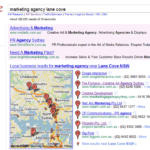If you have a business, one of the first things you probably did was develop a website. Once you have your website, you may be thinking that you’re good to go. The website is there, and you never have to touch it again, right?
Wrong.
In the early days of the web, this was absolutely true. A website was your business presence on the web. You didn’t have to spend a lot of time maintaining it, other than updating contact information and adding new products or services occasionally. Things have changed.
Google algorithm changes have made it necessary to keep your website fresh and alive if you want to improve your search engine ranking (SER). SER is determined by the quality of your content, your site traffic, and the structure of your website overall. Social media also plays a role.
These 10 essentials will get you started.
Social Media
If you don’t have a social presence by now, you need to stop reading this article and call a social media strategist ASAP. They can get you up and running for less manpower than it would cost you to do it. If you do it yourself, make sure you have the icons on the front page of your site.
Social Media Icons
In addition to having buttons to link to your social media, you want visitors to your site and blog to share with their friends. ShareThis and other services are free. You need share buttons on your products and on every blog post.
Easy Contact Info
Include a physical address if applicable and a phone number that is answered. Your phone number should be visible and easily accessible on every page of your site. For mobile users, make your phone numbers clickable. This goes for email addresses, too.
Product or Service Information
Crucial information about your services and/or products is important. Restaurants should have their menu online. Retailers should have photos of their stock items with prices. Service businesses should list all services and packages and consider including prices. Your competitors are.
Easy Navigation
Google likes a well-structured site for indexing and site ranking purposes, and your customers do, too. If a customer has to spend more than 60 seconds searching for your contact information, they will likely move on.
Testimonials
If you have happy customers, let the world know. There are very few things that will help sell your business more than your customers’ testimonials.
About Page
A solid about page, with photos of the team and a history of the company, reassures your customers that you’re legitimate and helps to foster a connection.
Blog
Search engine algorithms, particularly Google, rank a site by its content and relevancy. A blog gives you content that is frequently refreshed. Search engine optimization (SEO) gets a huge boost from blogs as well, because you can write your posts carefully with SEO in mind.
Site Security
If you’re accepting online sales, secure your site with an SSL certificate. TrustE, VeriSign, and Entrust are just a few of the options that you can explore.
Live Chat
There are multiple free or inexpensive chat tools available. Zopim and SnapEngage are the most popular. Giving your customers the opportunity to talk to a live person could make the difference in whether or not you get the sale or your competition does.
This is a start. There are other things that you can do to take your site to the next level, but if you have these things in place, you’re already ahead of your competition.




